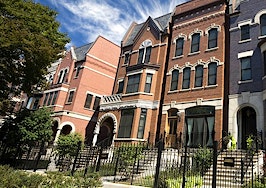The millennial generation is slow to get started in the housing market, and many of them put to blame their high amounts of student debt. Mapping Student Debt reports more than 42 million Americans owe a total of $1.1 trillion in school debt.
 Using data from the Department of Education and tax information from the Internal Revenue Service, Mapping Student Debt breaks down where borrowers are the most bogged down. The maps below measure ZIP code-level data, average household student loan balances and delinquency in relation to ZIP code median income.
Using data from the Department of Education and tax information from the Internal Revenue Service, Mapping Student Debt breaks down where borrowers are the most bogged down. The maps below measure ZIP code-level data, average household student loan balances and delinquency in relation to ZIP code median income.
According to the map below, the lighter the color the lower the delinquency rate of loans. Dark purple represents an area with extremely high delinquency.
Throughout the southwest communities of Chicago and into Indiana, the delinquency rate is high. In the center of the city, the delinquency rate is lower but the amount of loan balance is consistently high. So while these Chicagoans are paying their bills on time, they have a lot of them.
Let’s take a closer look at the city:
The 60604 ZIP code has an low delinquency rate but an astronomical average loan balance. Residents here make a median income of $132,188. Neighboring ZIP codes 60605 and 60603 show similar trends.
Maps by Mapping Student Debt through an interactive project with the Washington Center for Equitable Growth.











